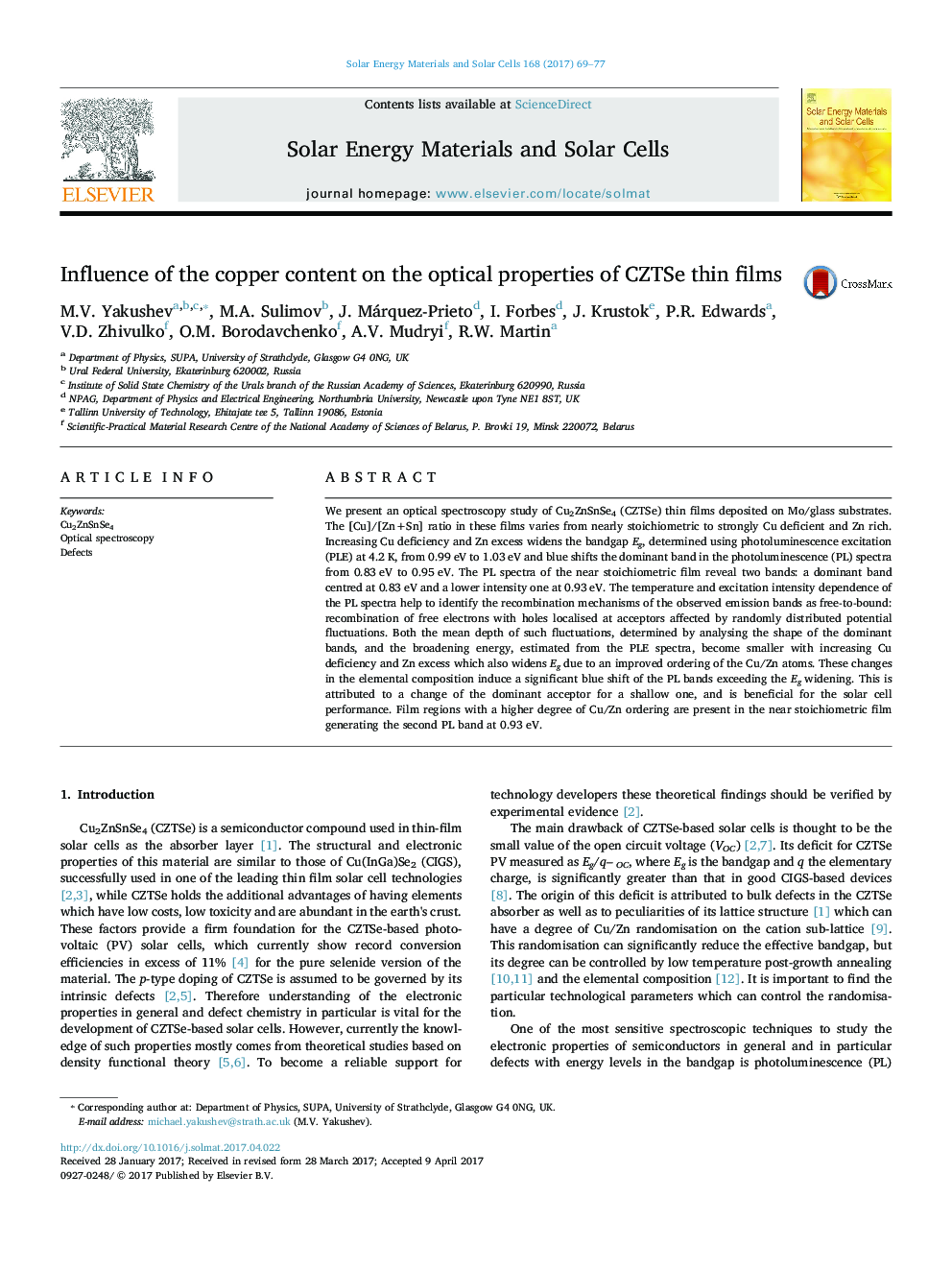| Article ID | Journal | Published Year | Pages | File Type |
|---|---|---|---|---|
| 4758784 | Solar Energy Materials and Solar Cells | 2017 | 9 Pages |
Abstract
We present an optical spectroscopy study of Cu2ZnSnSe4 (CZTSe) thin films deposited on Mo/glass substrates. The [Cu]/[Zn+Sn] ratio in these films varies from nearly stoichiometric to strongly Cu deficient and Zn rich. Increasing Cu deficiency and Zn excess widens the bandgap Eg, determined using photoluminescence excitation (PLE) at 4.2Â K, from 0.99Â eV to 1.03Â eV and blue shifts the dominant band in the photoluminescence (PL) spectra from 0.83Â eV to 0.95Â eV. The PL spectra of the near stoichiometric film reveal two bands: a dominant band centred at 0.83Â eV and a lower intensity one at 0.93Â eV. The temperature and excitation intensity dependence of the PL spectra help to identify the recombination mechanisms of the observed emission bands as free-to-bound: recombination of free electrons with holes localised at acceptors affected by randomly distributed potential fluctuations. Both the mean depth of such fluctuations, determined by analysing the shape of the dominant bands, and the broadening energy, estimated from the PLE spectra, become smaller with increasing Cu deficiency and Zn excess which also widens Eg due to an improved ordering of the Cu/Zn atoms. These changes in the elemental composition induce a significant blue shift of the PL bands exceeding the Eg widening. This is attributed to a change of the dominant acceptor for a shallow one, and is beneficial for the solar cell performance. Film regions with a higher degree of Cu/Zn ordering are present in the near stoichiometric film generating the second PL band at 0.93Â eV.
Related Topics
Physical Sciences and Engineering
Chemical Engineering
Catalysis
Authors
M.V. Yakushev, M.A. Sulimov, J. Márquez-Prieto, I. Forbes, J. Krustok, P.R. Edwards, V.D. Zhivulko, O.M. Borodavchenko, A.V. Mudryi, R.W. Martin,
